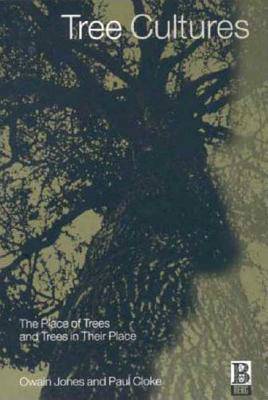
- Retrait gratuit dans votre magasin Club
- 7.000.000 titres dans notre catalogue
- Payer en toute sécurité
- Toujours un magasin près de chez vous
- Retrait gratuit dans votre magasin Club
- 7.000.0000 titres dans notre catalogue
- Payer en toute sécurité
- Toujours un magasin près de chez vous
Tree Cultures
The Place of Trees and Trees in Their Place
Paul Cloke, Owain Jones
Livre relié | Anglais
274,95 €
+ 549 points
Format
Description
The relationship between nature and culture has become a popular focus in social science, but there have been few grounded accounts of trees. Providing shelter, fuel, food and tools, trees have played a vital role in human life from the earliest times, but their role in symbolic expression has been largely overlooked. For example, trees are often used to express nationalistic feelings. Germans drew heavily on tree and forest imagery in nation-building, and the idea of 'hearts of oak' has been central to concepts of English identity. Classic scenes of ghoulish trees coming to life and forests closing in on unsuspecting passers-by commonly feature in the media. In other instances, trees are used to represent paradisical landscapes and symbolize the ideologies of conservation and concern for nature. Offering new theoretical ideas, this book looks at trees as agents that co-constitute places and cultures in relationship with human agency. What happens when trees connect with human labour, technology, retail and consumption systems? What are the ethical dimensions of these connections? The authors discuss how trees can affect and even define notions of place, and the ways that particular places are recognized culturally. Working trees, companion trees, wild trees and collected or conserved trees are considered in relation to the dynamic politics of conservation and development that affect the values given to trees in the contemporary world. Building on the growing field of landscape study, this book offers rich insights into the symbolic and practical roles of trees. It will be vital reading for anyone interested in the anthropology of landscape, forestry, conservation and development, and for those concerned with the social science of nature.
Spécifications
Parties prenantes
- Auteur(s) :
- Editeur:
Contenu
- Nombre de pages :
- 262
- Langue:
- Anglais
Caractéristiques
- EAN:
- 9781859734988
- Date de parution :
- 01-04-02
- Format:
- Livre relié
- Format numérique:
- Genaaid
- Dimensions :
- 161 mm x 241 mm
- Poids :
- 530 g

Les avis
Nous publions uniquement les avis qui respectent les conditions requises. Consultez nos conditions pour les avis.






